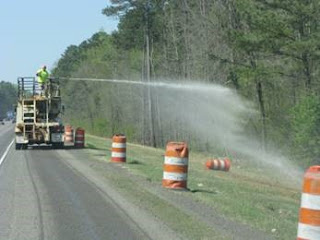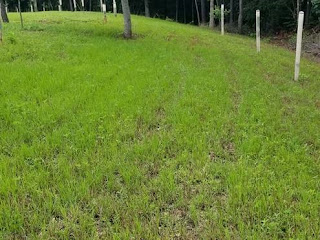Today’s Erosion and Sediment Control Tip: #20

When using hydroseeding equipment to apply seed, fertilizer, lime, hydromulch or hydraulic erosion control product, how do you know when you have achieved a uniform coverage? Some products have color (green) that can let you know what areas have been covered, but doesn’t tell you if the application is uniform. This picture clearly shows that most of the product goes to the outermost part of the “throw” from this type nozzle. It is most important for seed, fertilizer, lime and other products to be uniformly applied to be successful. The best way is to always use an experienced nozzle operator and driver because it requires teamwork. DON’T PUT THE “NEW GUYS” DOING THIS. Also, whenever possible, calculate the coverage area for the hydroseeder volume and mark that area on the ground. Product should be applied in at least 2 different directions on every site when possible and the tank emptied on the marked area. Nozzle operators and drivers should drive or look over the site together
